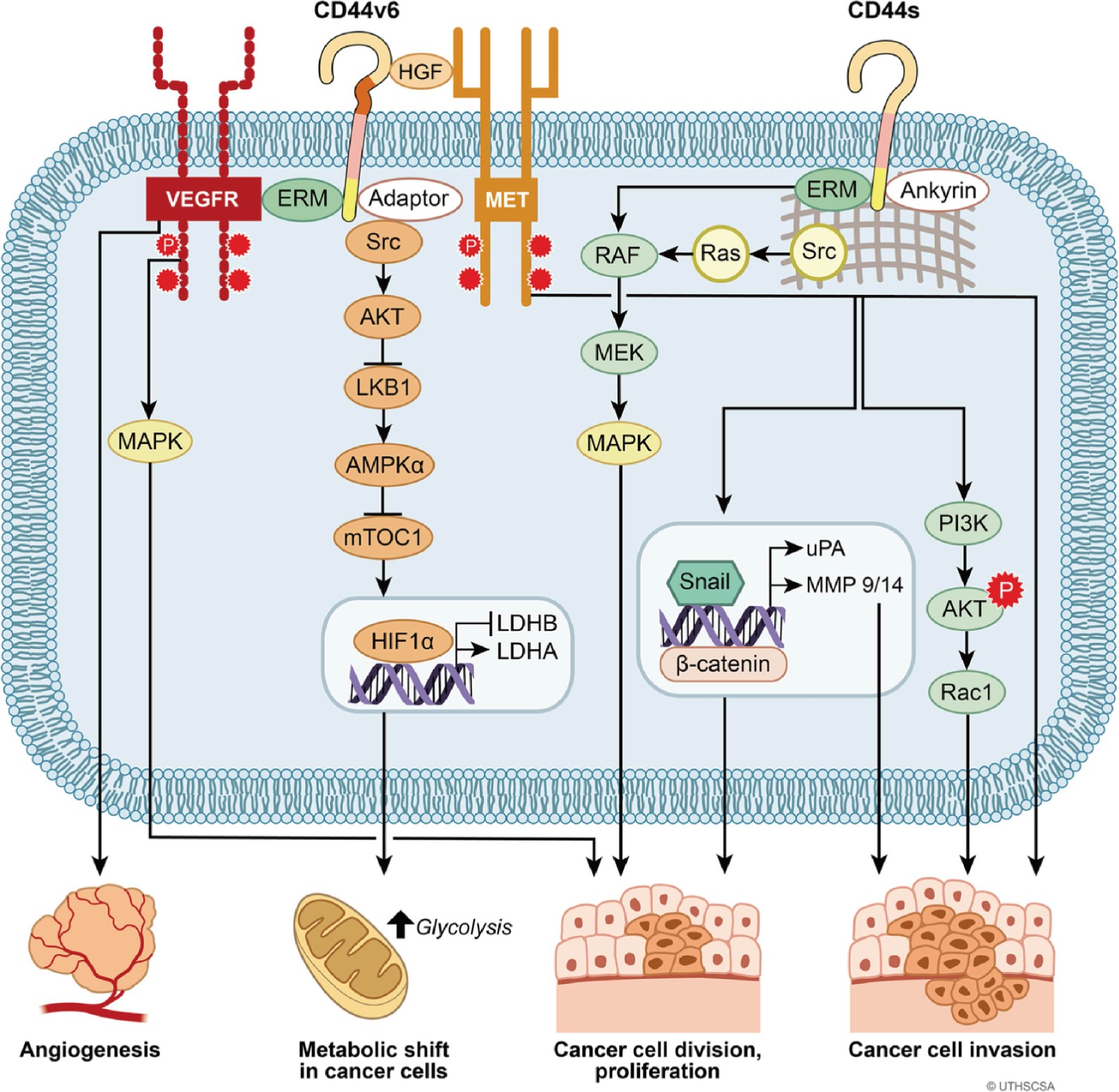
Our promise to you:
Guaranteed product quality, expert customer support.
 24x7 CUSTOMER SERVICE
24x7 CUSTOMER SERVICE
 CONTACT US TO ORDER
CONTACT US TO ORDER
CD44 Gene Editing 
Hyaluronan or CD44 receptor, as a leucocyte antigen, is encoded on the short arm of chromosome 11. The phenomenon of extensive splicing leads to a variety of variant isoforms of CD44 receptor, and are denoted as CD44v. There are around nine variant sites, which are coded as CD44v2-v10. CD44 receptor, hyaluronic acid, binds with some other ligands like osteopontin, fibronectin, chondroitin, collagen, and serglycin, and participates in multiple physiological processes. The functions of CD44 in normal physiology can broadly be divided into – cellular adhesion, repair system, and inflammatory responses.
The structural diversity of CD44 is further amplified by extensive and often isoform-specific posttranslational modifications, including N- and O-linked glycosylation, phosphorylation and glycosaminoglycan attachment. CD44s is mainly N-glycosylated while CD44v is O-glycosylated. Post-translational modifications of CD44 can change the interaction of CD44 with cytoskeleton, thus regulating its function. There are several mechanistically different processes by which CD44 affects cancer cells or cancer progression. It is mainly adhesion mediated by CD44-ligand interaction (HA, other ligands), HA dependent association of CD44 with kinases, CD44 signaling mediated by domain cleavage without ligand interaction (like MMP mediated CD44 ectodomain (CD44ECD) shedding which is positively correlated with malignancy of human tumors or intracellular domain (CD44ICD) cleavage where ICD fragment enters the nucleus and regulates transcription) and lastly CD44 mediated modulation of signaling pathways.
 Figure 1. CD44-mediated downstream signaling pathways. (Chen C, et al., 2018)
Figure 1. CD44-mediated downstream signaling pathways. (Chen C, et al., 2018)
CD44 and Tumor
CD44 expression is an important mediator of a cell's interactions with its microenvironment, which is also true for cancer cells and cells associated with solid tumors. CD44 expression in cancer stem cells is related to metastasis and resistance to apoptosis. A recent study of adult T-cell leukemia (ATL) showed that ATL cells grown on epithelial cells form anchorage-dependent multicellular aggregate with a subpopulation of cancer stem cells with high CD44 expression. Besides, cancer stem cells in ATL can be induced by microenvironmental interactions; and, it validated the significance of CD44 in the highly invasive and metastatic phenotype characteristic of ATL cancer stem cells.
Multiple isoforms of CD44 are associated with both metastasis and drug resistance. The role of CD44 in promoting tumor metastasis and invasion aligns with the native role of CD44 in motility, adhesion, activation and localization. Because many cancer stem cells express high levels of CD44 and are associated with drug resistance, this is one mechanistic link between drug resistance and CD44 expression. Many clinical studies have suggested that CD44 expression is correlated with poor prognosis and poor response to treatment, such as CD44 expression in gastric cancer, in hepatoblastoma, in chondrosarcoma and breast cancer. Further meta-analysis of clinical cases may provide more insight into the mechanistic link between distinct CD44 isoforms, drug resistance and poor prognosis. Variant targeting may become a promising field for therapeutic development, targeting different CD44 isoforms and associated phenotypes to treat metastatic cancer.
CD44 Gene Editing Services
CRISPR/Cas9 PlatformCB at Creative Biogene is dedicated to offering comprehensive CRISPR/Cas9 gene editing services and products for academic research, biotech research and pharmaceutical drug discovery. With deep gene editing knowledge and extensive experience in experimental operation and data processing, we help you effectively control CD44 genes knockout/knockin/point mutation in cells or animals via CRISPR/Cas9 technology.
| Service | Details | Alternative cell lines or animal species |
| CD44 Gene Editing Cell Line Generation | gRNA design and synthesis Transfect the cell lines you're interested Select the high expression cells and sort monoclonal cell Validate the knockout/knockin/point mutation of CD44 by PCR and sequencing Provide cryogenically preserved vials of stable cells and final reports | HEK239T, Hela, HepG2, U87, Ba/F3, CHO, MDA-MB-453, MDA-MB-231NIH3T3, T47D, Neuro2a, MCF7, RKO, K562, RAW264.7, etc. |
| CD44 Gene Editing Animal Model Generation | CD44 gene conventional knockout animals CD44 gene conditional knockout animals CD44 point mutation animals CD44 knockin animals | Mouse, rat, rabbit, zebrafish, C. elegans, etc. |
Related Products at CRISPR/Cas9 PlatformCB
| CATALOG NO. | PRODUCT NAME | PRODUCT TYPE | INQUIRY |
| CLKO-0020 | CD44 KO Cell Lysate-HeLa | Knockout Cell Lysate | Inquiry |
| CSC-RT0515 | Human CD44 Knockout Cell Line-HeLa | Pre-Made Knockout Cell Line | Inquiry |
References
- Ghosh S C, et al. CD44: a validated target for improved delivery of cancer therapeutics. Expert opinion on therapeutic targets, 2012, 16(7): 635-650.
- Mattheolabakis G, et al. Hyaluronic acid targeting of CD44 for cancer therapy: from receptor biology to nanomedicine. Journal of drug targeting, 2015, 23(7-8): 605-618.
- Prochazka L, et al. Regulation of alternative splicing of CD44 in cancer. Cellular signalling, 2014, 26(10): 2234-2239.
- Negi L M, et al. Role of CD44 in tumour progression and strategies for targeting. Journal of drug targeting, 2012, 20(7): 561-573.
- Chen C, et al. The biology and role of CD44 in cancer progression: therapeutic implications. Journal of hematology & oncology, 2018, 11(1): 64.